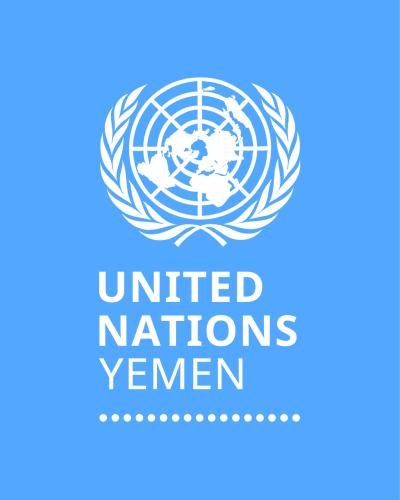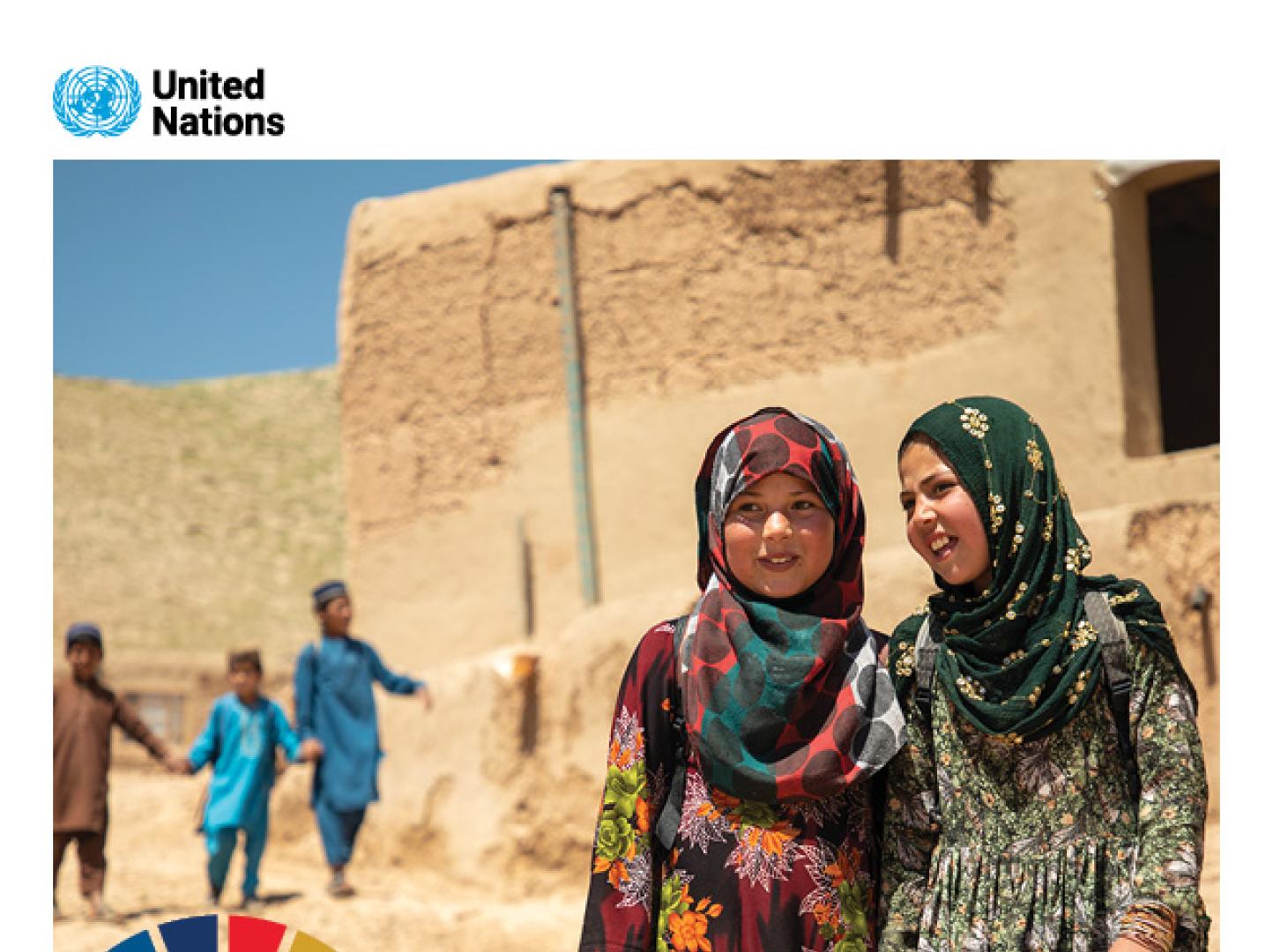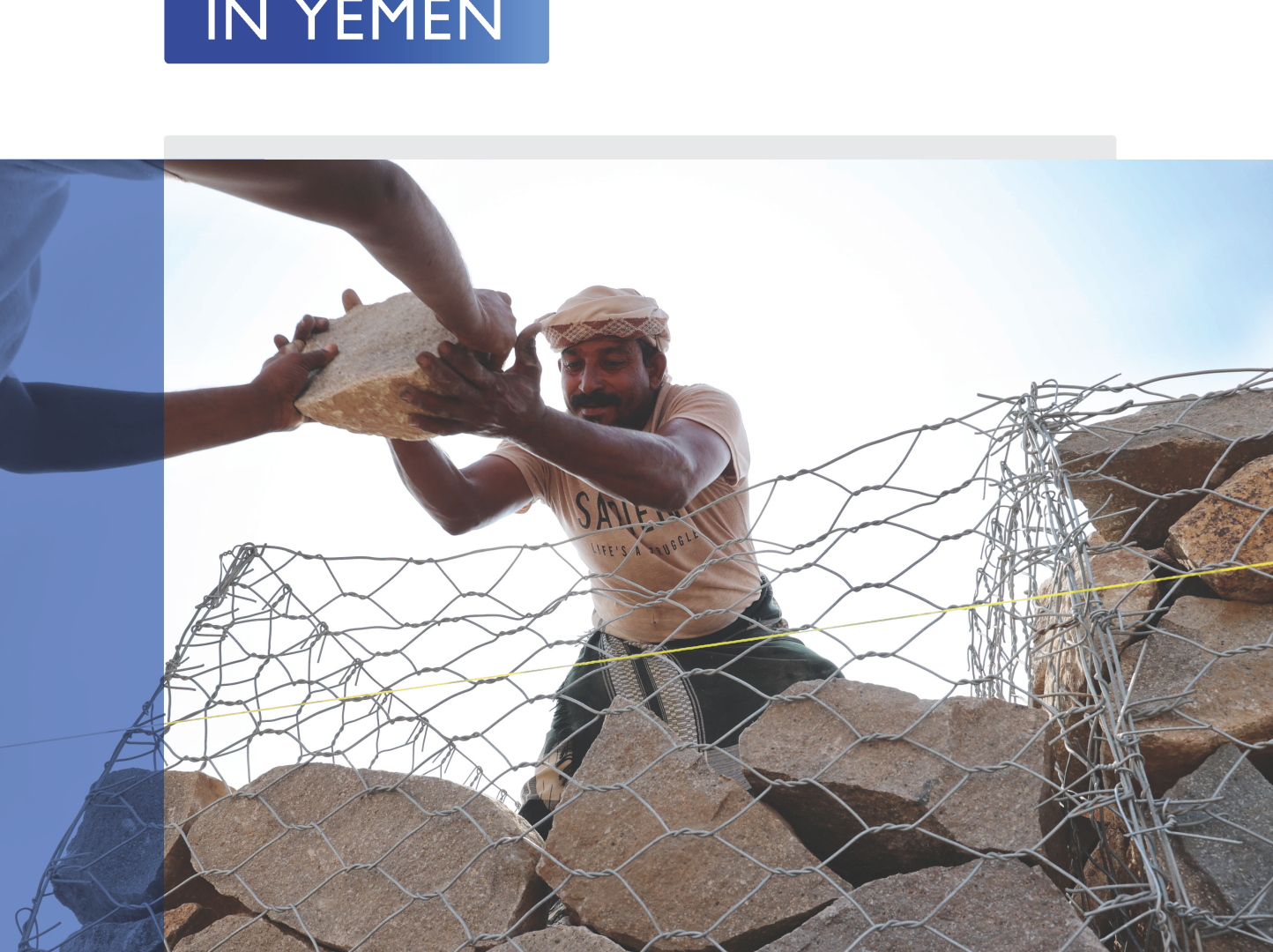UNITED NATIONS YEMEN SUSTAINABLE DEVELOPMENT COOPERATION FRAMEWORK 2022 – 2024

EXECUTIVE SUMMARY
UN global reform has elevated the United Nations Sustainable Development Cooperation Framework (UNSDCF) to be “the most important instrument for planning and implementing UN development activities” in the country. It outlines the UN development system’s contributions to reach the Sustainable Development Goals (SDGs) in an integrated way, with a commitment to leave no one behind, uphold human rights, Gender Equality and Women’s Empowerment (GEWE), and other international standards and obligations. The UNSDCF seeks to address the humanitarian, development and peace challenges in Yemen in an environment where key public institutions are fragmented, no national strategy exists, and where there has been no national budget since 2014. The Yemen UNSDCF outlines the UN’s collective priorities and development objectives to be reached jointly in the next three years 2022-2024 as part of an ongoing and longer- term vision for resilience building and forging of a pathway to peace.
Yemen is a country in conflict. The priorities of this UNSDCF are derived from the analysis of the impacts of this ongoing crisis on the people of Yemen, and the needs and opportunities as outlined in the UN’s Common Country Analysis (CCA) conducted in 2021.
The UN has prioritized four pillars that resonate with the SDG priorities of people, peace, planet and prosperity that aim, as a matter of urgency, to improve people’s lives in Yemen and build resilience that is equitable, inclusive, people-centred, gender responsive and human rights based, through outcomes that:
1. Increase food security, improving livelihood options, and job creation
2. Preserve inclusive, effective and efficient national and local development systems strengthening
3. Drive inclusive economic structural transformation
4. Build social services, social protection, and inclusion for all
The theory of change is driven by an expectation that by 2024 the impact for all people of all ages in Yemen affected by conflict, forced displacement and living in poverty in all its dimensions will experience change in the quality of their lives. This will be possible through increased food security and nutrition, livelihood options and job creation; preserved national and local development and systems strengthening; inclusive economic structural transformation and the building of social services, social protection and inclusion for all. Food security and nutrition, and sustainable and resilient livelihoods and environmental stability will be realized through effective food production and diversified food and nutrition security; and through sustainable climate sensitive environmental management. Rights-based good governance and inclusive gender sensitive improved public services and rule of law will be possible as a result of accountable, inclusive and transparent institutions and systems, as well as the building of trusted justice systems. Increased income security and decent work for women, youth and vulnerable populations will be realised through micro and macro-economic development and job creation. Strengthened social protection and basic social support service delivery focused on support to marginalized groups, and strengthening women and youth leadership in decision making processes will be supported through the preservation of social protection and expanded and effective social assistance and basic services.
The UNSDCF prioritises the population groups in Yemen that have the highest risk of being left behind due to the impact of conflict; economic, social, geographic or political exclusion; and marginalisation. Enacting the central transformative principle of the 2030 Agenda and the SDGs, whilst challenging in the Yemen context, does provide the lens through which the UNSDCF targets the most vulnerable and prioritise Leaving No One Behind.
On the basis that some groups in Yemen bear the brunt of the conflict due to forced displacement, livelihood disruption, food insecurity, limited social safety nets, increased levels of poverty and poor-
quality housing, the CCA 2021 identifies the following population groups at the greatest risk of being left behind:
- Women and girls - 73 percent of those displaced in Yemen are women and girls, especially women of reproductive age and adolescent girls
- Children – 60 percent of those killed directly by conflict are children under five
- Youth and adolescents – an estimated 2 million school-age girls and boys are out of school as poverty, conflict, and lack of opportunities disrupt their education
- Internally displaced persons – more than 4 million IDPs with 172,000 newly displaced in 2020 and almost 160,000 in 2021
- Refugees, asylum seekers and migrants – Yemen hosts approximately 138,000 migrants and 140,000 refugees and asylum seekers
- Persons with disabilities – 4.5 million Yemenis have at least one disability
- Ethnic and religious minorities – It is estimated that Muhamasheen represent 10 percent of the population living in marginalised conditions
The UNSDCF is comprised of four chapters. Chapter One: explores Yemen’s progress towards the 2030 Agenda through a detailed analysis of the country context drawing on the 2021 CCA. Chapter Two: presents the theory of change generally and per outcome area. Chapter Three: outlines the UNSDCF’s implementation plan focused on the management structure, resources, links to country programming instruments and Yemen’s Business Operations Strategy. Chapter Four: highlights the process for CCA updates, Monitoring and Evaluation and Learning. The Results Framework presents the outcomes and key performance indicators for monitoring agreed targets utilizing verifiable data sets. Two annexes capture the legal basis for all UN entities engaged in the UNSDCF and the mandatory commitments to Harmonised Approaches to Cash Transfers (HACT)1.
The UNSDCF represents the UN’s understanding that continued engagement in Yemen requires an operational architecture under-pinned by the Business Operations Strategy (BOS) and an integrated set of achievable programming priorities. These two strategic approaches of the UN system strengthen and make more inclusive the country’s national and local governance structures, and mainstream the required responses to the economic and health consequences of COVID-19. They tackle food insecurity and nutrition as a matter of priority and integrate the promotion and advancement of gender equality and women’s and girl’s empowerment.




















